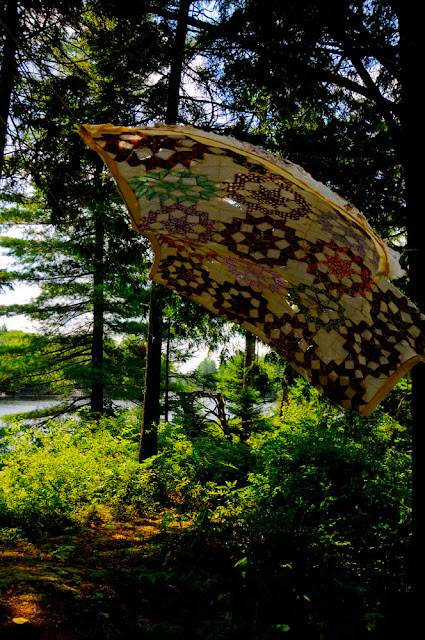Last week I was looking through my fabric stash and came upon an old quilt top stuffed in a bag at the back off the closet. It is tattered, stained, worn and torn. It has no special history or memories for me. I don't even remember how or where I acquired it, maybe at a thrift shop or a late night EBay purchase. My first thought was, " I should throw this thing out!”
And then I noticed that this anonymous quilt top was hand sewn. Someone spent hours stitching bits of scrap fabrics, perhaps from her blouse, a worn-out but favorite dress, curtains that once covered a kitchen window. Someone cut the shapes and with needle and thread joined the pieces of cloth to create Ohio Star quilt blocks and then stitch-by-stitch sewed the blocks together to make this quilt top. A labor of love, patience, and determination that did not reach its final purpose, to be layered with batting and backing and quilted together to make a quilt that would provide warmth and security for someone. On no, I couldn't toss this quilt top into the trash without giving it a chance to a purpose.
 After a washing, I hung it on the line, sat down on the steps and watched the tattered quilt top . As it waved and flapped in the breeze, the words wabi-sabi came to mind.
After a washing, I hung it on the line, sat down on the steps and watched the tattered quilt top . As it waved and flapped in the breeze, the words wabi-sabi came to mind.
Wabi-sabi is a Japanese esthetic that finds beauty in the imperfect, impermanent, and incomplete. “ If an object or expression can bring about, within us, a sense of melancholy and a spiritual longing, the object could be said to wabi-sabi.”
I watched the wabi-sabi quilt dry in the wind as the words; nothing lasts, nothing is perfect, nothing is finished, went around and around in my mind.









